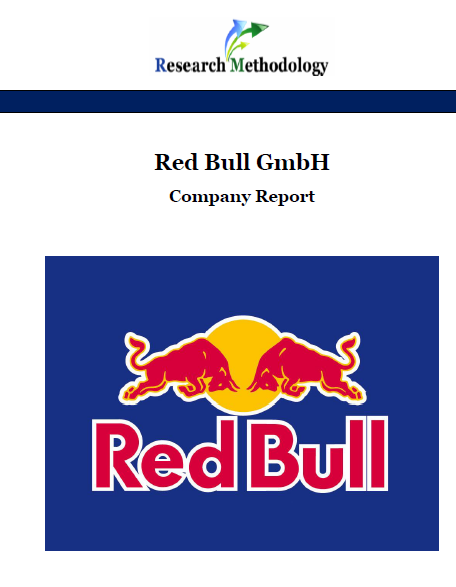Red Bull GmbH Report

- Published: June 2016
- 7628 Words
- 31 Pages
Red Bull GmbH is a manufacturer of one of the most popular energy drinks Red Bull based in Austria. The company has been founded by Dietrich Mateschitz in the mid 1980’s and the first Red Bull Energy Drink was sold in Austria on April 1, 1987. Today, Red Bull beverages are sold in more than 169 countries and about 60 billion cans of Red Bull have been consumed so far. In 2015 alone, more than 5.9 billion cans were sold, which is an increase of 6.1 per cent compared to the previous year. In 2015, Red Bull GmbH revenues amounted to EUR 5.903 billion, a 15.5 per cent increase compared to the previous year. The company employs 10,997 people in 169 countries.
Red Bull pursues product differentiation business strategy and the company differentiates its energy drinks according to its perceived positive effects in terms of enhancing physical and mental performance. Red Bull brand possesses solid competitive advantages in terms of the first mover advantage, high scope of brand recognition, an impressive level of profitability and effective marketing strategy.
The marketing message of the brand ‘Red Bull gives you wings’ is effectively communicated to the target customer segment via multiple communication channels in an integrated manner. Along with its own media platforms, Red Bull owns a set of sports teams such as RB Leipzig, FC Red Bull Salzburg, Red Bull Brasil, New York Red Bulls, Red Bull Racing and Scuderia Toro Rosso. Despite the phenomenal success of the company, Red Bull has a set of weaknesses that include its overly expensive prices, limited range of products, portfolio of products that are rightly considered as unhealthy and concentrated production facilities.
Red Bull GmbH Report contains the application of the major analytical strategic frameworks in business studies such as SWOT, PESTEL, Porter’s Five Forces, Value Chain analysis and McKinsey 7S Model on Red Bull GmbH. Moreover, the report contains analyses of Red Bull’s business strategy, leadership and organizational structure and its marketing strategy. The report also discusses the issues of corporate social responsibility.
1. Introduction
2. Business Strategy
3. Leadership
4. Organizational Structure
5. SWOT Analysis
5.1 Strengths
5.2 Weaknesses
5.3 Opportunities
5.4 Threats
6. PESTEL Analysis
6.1 Political Factors
6.2 Economic Factors
6.3 Social Factors
6.4 Technological Factors
6.5 Environmental Factors
6.6 Legal Factors
7. Marketing Strategy
7.1 7Ps of Marketing
7.2 Segmentation, Targeting & Positioning
7.3 Marketing Communication Mix
7.3.1 Advertising
7.3.2 Sales Promotion
7.3.3 Events & Experiences
7.3.4 Public Relations
7.3.5 Direct Marketing
7.3.6 Personal Selling
8. Porter’s Five Forces Analysis
9. Value-Chain Analysis
9.1 Primary Activities
9.2 Support Activities
10. McKinsey 7S Framework
11. Corporate Social Responsibility (CSR)
11.1 CSR Programs and Initiatives
11.2 CSR Criticism
12. Recommendations
List of Figures
Figure 1 Red Bull organizational structure
Figure 2 Red Bull Wings program structure
Figure 3 Red Bull Porter’s Five Forces
Figure 4 Market share of soft drinks and energy drinks worldwide as of 2015
Figure 5 Energy drink market share in the US
Figure 6 Red Bull Value chain analysis
Figure 7 Red Bull McKinsey 7S Framework
List of Tables
Table 1 Red Bull SWOT analysis
Table 2 Red Bull segmentation, targeting and positioning
Table 3 Red Bull Media House media platforms
AMP
Coca Cola Company
Lucozade
Monster Beverage Corp.
NOS
PepsiCo Inc.
Podesta + Partners
Redline
Rockstar
Red Bull GmbH
TC Pharmaceutical Industries
Why this report is so cheap?
1. Reports offered in this portal are produced by a small group of academic writers headed by John Dudovski.
2. Our reports are shorter compared to reports produced by large research companies. Company reports are produced to assist with academic works of business students in particular. Therefore, all points that do not relate to academic needs of business students are left out.
3. We do not have huge fixed expenses large research companies do, thus, we are able to deliver reports for a little cost.
How do I receive the report?
After completing the payment you will receive a link to the e-mail related to your Pay Pal account or the e-email you entered when specifying bank details. You can download the report via this link. The report is downloaded in PDF format. The link will stay active for 7 days.
How can I use the report to complete my academic assignment/research?
Reports offered by research-methodology.net are professionally written samples in their respective areas. Reports are intended to be used as guides and sources of secondary data for reference purposes.
I did not receive the link/I can not download the report?
If you have any difficulties with downloading reports you have purchased please e-mail us the details of your purchase. We will send the report to you as an e-mail attachment shortly.
- Published: June 2016
- 7628 Words
- 31 Pages



